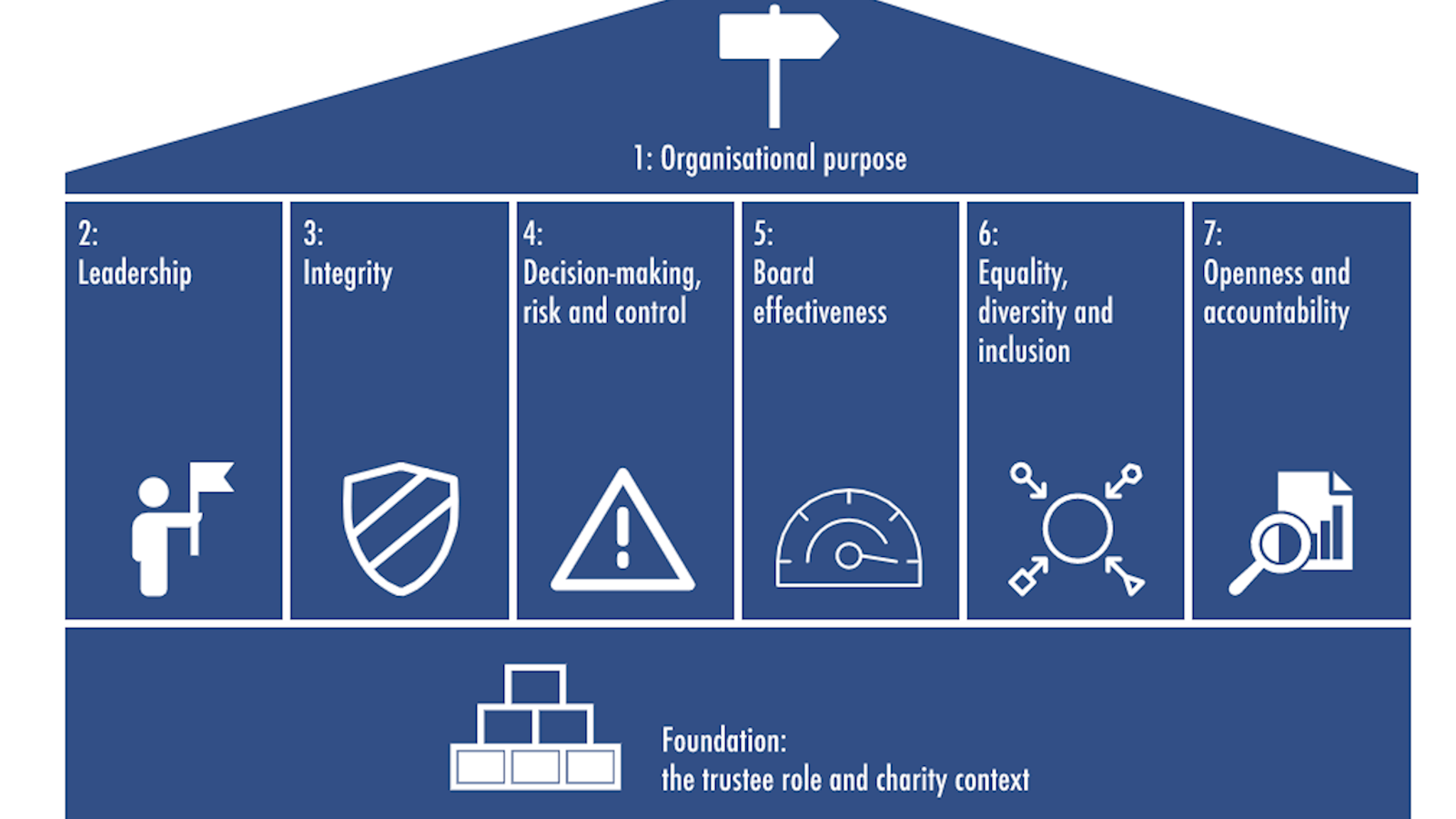This is the second article in a series on the Charity Governance Code, showing how charities of all sizes can adopt and demonstrate effective governance processes. This article investigates the second principle of the Code on Leadership.
The Charity Governance Code
Principle 2: Leadership
“Every charity is headed by an effective board that provides strategic leadership in line with the charity’s aims and values.”
This principle reinforces the known requirement that the board should set the tone of an organisation. The Code reinforces this by emphasising the key outcomes which the board collectively, and trustees’ individually, should be seeking to achieve. This could be a long list, but the Code focuses on three:
- Ensuring that the charity has a clear and relevant set of aims and an appropriate strategy for achieving them
- Agreeing the charity’s vision, values and reputation and leading by example, requiring anyone representing the charity to reflect its values positively
- Ensuring the charity’s values are reflected in all its work, and that the ethos and culture of the organisation underpin the delivery of all activities
The Code goes on to provide guidance on recommended practice for both larger (turnover of greater than £1m) and smaller charities. The recommended practice for charities aligns with good practice of directors in any other organisation. It refers to how the charity should be lead and then addresses the behaviours expected of trustees in leading by example and demonstrating commitment to the charity.
The role of the chair is seen as critical and has prime responsibility for ensuring good corporate disciplines from agreeing priorities and governance structures to formal record keeping and organisational relationships with subsidiaries.
The Board needs to set the values of the charity, ensuring they are aligned with its purpose. The Board is then expected to take that further in how they oversee and direct the activities of the charity.
Trustees need to give sufficient time to the charity to be effective in their role. The recommended practice also draws out the need for Trustees who may also volunteer in another capacity for the charity to differentiate clearly between the responsibilities and authorities they have in each role.
These recommended practices are applicable to both larger and smaller charities. However, the differences drawn out in the recommended practice between the larger and smaller charities are, to my mind, twofold:
- For the larger charity, the recommended practice draws out the practical need for the Board, and Trustees, to work through, and with, the Chief Executive and Senior Management. Not only would the Board delegate authority through the Chief Executive but there is emphasis on the involvement of the Trustees in the appointment, management and, occasionally, dismissal of members of the senior management team. For a smaller charity, the expectation would appear to be that the Trustees would be drawn into more of the day-to-day operations of the charity and, necessarily, with all staff.
- Interestingly, for smaller charities, special emphasis is made to the Board’s management and responsibility for volunteers who are certainly more prevalent in the charity sector than in the commercial sector. The Code emphasises the need for ‘proper arrangements for their (the volunteers’) recruitment, support, and supervision.’ This emphasis on volunteers is absent from the recommended practice for larger charities, which, given the dependence of some of the UK’s largest charities on volunteer support, I find surprising.
Observations
The recommended practice outlined in Principle 2: Leadership of the Charity Governance Code is a starting point for delivering the Leadership outcomes of the Code. In smaller charities, in terms of people rather than turnover, it is much easier to engage with the organisation about the vision, its aims, the strategy, its values and its reputation. However, the personal commitment to meaningfully engage, and lead, is lower, because in many situations a trustee may be ‘hands on’.
Inevitably, there is a contrast for larger, more complex charities. For a board and the trustees to ‘set the tone’ of the organisation; to really lead the organisation by setting its vision, aims, strategy, values, and reputations; and to lead by example requires a meaningful commitment by trustees. Relationships are critical, both throughout board governance structures and between trustees and management; this all requires a substantial level of commitment, particularly from those with specialist skills and knowledge on the board. The responsibility for the charity resides with the board, as we are all aware. To avoid the board making binary decisions on strategy, vision and values following worthy presentations by management, trustees need to commit time, and far more than will be mentioned in the trustees’ job description. This is emphasised in the recommended practice for both smaller and larger charities, but, from personal experience, I would affirm that commitment enriches the experience.
About the author
Simon Lloyd ACA is a member of the Volunteering Community's Advisory Group and the Institute Members in Scotland Sustainability Group. He is now a Trustee on the Boards of four charities, having worked in the not-for-profit sector since 2016. (simon.t.lloyd@gmail.com)
*The views expressed are the author’s and not ICAEW’s.

